 To enhance service speed and avoid tariff delays, we've opened a US warehouse. All US orders ship directly from our US facility.
To enhance service speed and avoid tariff delays, we've opened a US warehouse. All US orders ship directly from our US facility.
| Cat. No. | Product Name | Field of Application | Chemical Structure |
|---|---|---|---|
| DC71349 | NF340 Featured |
NF340 is a potent and selective P2Y11 receptor antagonist. NF340 inhibits the activity of P2Y11R by completely combining with ATP-binding amino acid residues. NF340 ameliorates inflammation in human fibroblast-like synoviocytes and can be used for rheumatoid arthritis research.
More description
|
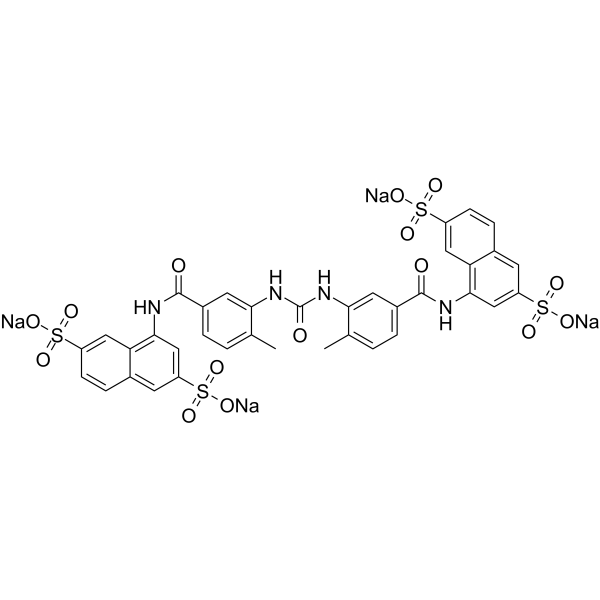
|
| DC73397 | BPRCX807 |
BPRCX807 (BPRCX-807) is a highly selective and potent CXCR4 antagonist with binding IC50 of 40.4 nM and EC50 of 48.1 nM for cell-mobility activity in the chemotaxis assays, inhibits CXCL12-mediated cell signaling pathway.
More description
|

|
| DC73396 | BPRCX714 |
BPRCX714 (BPRCX 714) is a highly selective and potent CXCR4 antagonist with binding IC50 of 34.2 nM, effectively inhibits CXCL12-induced movement of CCRF-CEM cells with EC50 of 13.7 nM.
More description
|

|
| DC70677 | PAR2 antagonist C391 Featured |
PAR2 antagonist C391 (C391) is a selective PAR2 antagonist, potently inhibits peptidomimetic-induced PAR2 Ca2+ signalling with IC50 of 1.3 uM.C391 blocks both PAR2 Ca2+ and MAPK signalling pathways activated by peptidomimetics and/or proteinase activation.C391 effectively attenuated compound 48/80-induced thermal hyperalgesia in vivo.C391 blocked A. alternata-induced, PAR2-dependent Ca2+ and MAPK signalling in 16HBE14o- cells, as well as β-arrestin recruitment in HEK 293 cells.C391 effectively attenuated A. alternata-induced inflammation, mucus production, mucus cell hyperplasia and airway hyperresponsiveness in acute allergen-challenged murine models.
More description
|
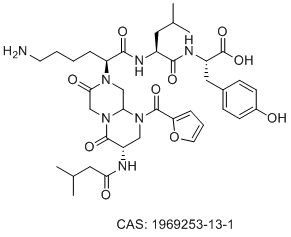
|
| DC8773 | JNJ-7777120 Featured |
JNJ-7777120 is a selective H4R antagonist with Ki of 4 ±1 nM, exhibits >1000-fold selectivity over the other histamin receptors.
More description
|
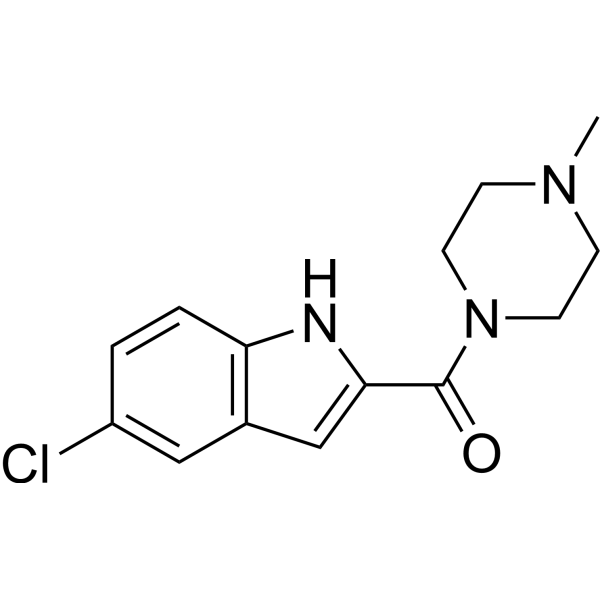
|
| DC5015 | Rotigotine Hydrochloride Featured |
Rotigotine is dopamine D2 and D3 receptor agonist. Ki values are 13 and 0.71 nM for D2 and D3 respectively. Rotigotine also has significant affinity for 5-HT1A and adrenergic α2B receptors. Rotigotine exhibits antiparkinsonian acitivity.
More description
|

|
| DC28252 | Seltorexant hydrochloride Featured |
Seltorexant hydrochloride (JNJ-42847922 hydrochloride) is an orally active, high-affinity, and selective OX2R antagonist (pKi values of 8.0 and 8.1 for human and rat OX2R). Seltorexant hydrochloride crosses the blood-brain barrier and quickly occupies OX2R binding sites in the rat brain.
More description
|
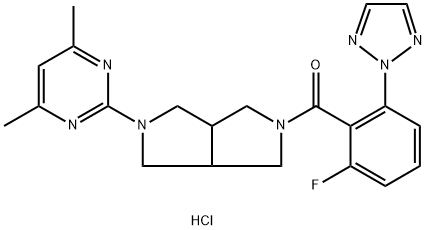
|
| DC40582 | Montelukast Featured |
Montelukast is a potent, selective and orally active antagonist of cysteinyl leukotriene receptor 1 (CysLT1). Montelukast can be used for the reseach of asthma and liver injury. Montelukast also has an antioxidant effect in intestinal ischemia-reperfusion injury, and could reduce cardiac damage.
More description
|
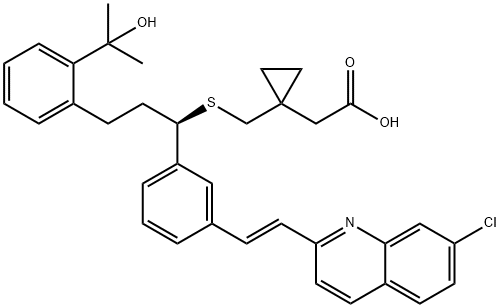
|
| DCAPI1015 | Zafirlukast(Accolate) Featured |
Zafirlukast(Accolate)
More description
|

|
| DC73393 | alpha-NETA Featured |
alpha-NETA (α-NETA) is a small molecule antagonist of chemerin receptor chemokine-like receptor 1 (CMKLR1), inhibits chemerin-stimulated β-arrestin2 association with CMKLR1 with IC50 of 4.9 uM.
More description
|
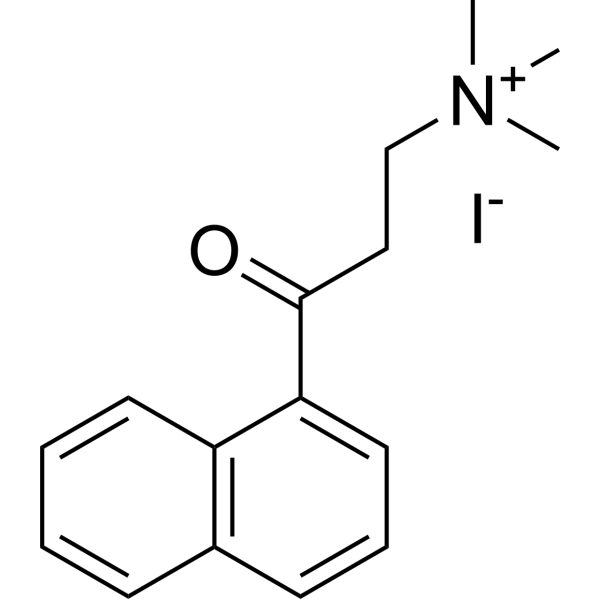
|
| DC70577 | LY3502970 (Orforglipron) Featured |
LY-3502970 (Orforglipron) is a potent, selective, orally active non-peptide agonist of glucagon-like peptide-1 (GLP-1) receptor.LY3502970 is a partial agonist, biased toward G protein activation over β-arrestin recruitment at the GLP-1R.
More description
|

|
| DC73480 | (R)-YNT-3708 Featured |
(R)-YNT-3708 is a potent, selective orexin 1 receptor (OX1R) agonist with EC50 of 7.48 nM and Emax 101%, 22-fold selectivity over OX2R (IC50=168 nM).
More description
|
-YNT-3708.gif)
|
| DC77776 | TRV045 |
TRV045 is a selective Sphingosine-1-phosphate subtype 1 receptor agonist with no effect on lymphocyte transport. TRV045 has antiepileptic activity.
More description
|

|
| DC77548 | KRO-105714 |
KRO-105714 is the antagonist for sphingosine phosphocholine receptor (SPC Receptor) and sphingosine-1-phosphate receptor 1 (S1P1 Receptor) (IC50=79.2 nM). KRO-105714 inhibits SPC-induced proliferation of NIH3T3 (IC50=5.6 nM), inhibits SPC-induced cell migration (IC50=0.59 μM) and tube formation in HUVECs. KRO-105714 inhibits SPC-induced generation of IL-4 and IL-5, exhibits anti-inflammtory efficacy in mouse atopic dermatitis models.
More description
|

|
| DC77286 | (Rac)-1-Oleoyl lysophosphatidic acid |
(Rac)-1-Oleoyl lysophosphatidic acid is an isomer of 1-Oleoyl lysophosphatidic acid sodium.
More description
|

|
| DC76677 | Elsovaptan |
Elsovaptan is the antagonist for vasopressin receptor that can be used in researchs of Alzheimer disease.
More description
|

|
| DC76676 | DM-4111 |
DM-4111, one of the major monohydroxyl metabolites of Tolvaptan. Obeticholic acid is a potent, selective and orally active FXR agonist.
More description
|

|
| DC76675 | A-49816 |
A-49816 is an orally active diuretic that increases urine volume and sodium and chloride excretion. A-49816 at high doses (12.5, 15, and 20 mg) caused significant salt and chloride excretion and diuresis in experimental animals.
More description
|

|
| DC76674 | (R)-(+)-Tolvaptan |
(R)-(+)-Tolvaptan ((R)-(+)-OPC-41061) is the (R)-(+) enantiomer of Tolvaptan.
More description
|

|
| DC76673 | ZH8965 |
ZH8965 is an orally active TAAR1-Gs/Gq agonist (EC50: 6.1/14.8 nM). ZH8965 improves antipsychotic-like phenotypes and cognitive impairment in the MK-801-induced mouse psychosis model. ZH8965 can be used in schizophrenia research.
More description
|

|
| DC76672 | N-Methylphenethylamine hydrochloride |
N-Methylphenethylamine (NMPEA) hydrochloride is a potent TAAR1 agonist. N-Methylphenethylamine hydrochloride also is a trace amine neuromodulator.
More description
|

|
| DC76671 | MMC(TMZ)-TOC TFA |
MMC(TMZ)-TOC TFA has high binding affinity and selectivity for somatostatin receptor subtype-2 (SSTR2). MMC(TMZ)-TOC TFA targets delivery of TMZ to SSTR2-positive tumor cells. MMC(TMZ)-TOC TFA can be used for the research of cancer.
More description
|

|
| DC76670 | Mazisotine |
SSTR4 agonist-1 (Compound 47) is a selective agonist for somatostatin receptor subtype 4 (SSTR4) with an EC50 of 4.7 nM. SSTR4 agonist-1 reveals a half-life > 130 minutes in human liver microsomes.
More description
|

|
| DC76669 | L-796778 acetate |
L-796778 acetate is a selective agonist of the sst3 receptor. In CHO-K1 cells expressing the hsst3 receptor, L-796778 acetate is a partial agonist that inhibits Forskolin
More description
|

|
| DC76668 | BN-81674 |
BN-81674 is a somatostatin analogue and a selective antagonist of the non-peptide human somatostatin sst3 receptor (Ki=0.92 nM). In addition, BN-81674 reversed the inhibition of cyclic AMP accumulation induced by 1 nM somatostatin through the sst3 receptor with an IC50 value of 0.84 nM. BN-81674 can be used in cancer research.
More description
|

|
| DC76667 | SW43 |
SW43 is a Sigma-2 selective ligand and agonist. SW43 is an ideal molecule for the development of cancer-targeted drug compounds. SW43 conjugated with DOX-L-NETA (89Y) exhibits antitumor activity in a VX2 cancer liver tumor allograft rabbit model. SW 43 conjugated with SW IV-52s to form SW III-123 activates the NF-κB pathway, has potent cytotoxicity against ovarian cancer cell lines, and induces apoptosis.
More description
|

|
| DC76666 | Opipramol dihydrochloride |
Opipramol (Ensidon) is an atypical tricyclic antidepressant (TCA). Opipramol acts primarily as a sigma (σ) receptor agonist and can potently interact with sigma recognition sites with a Ki value of 50 nM. Opipramol can be used for the research of generalized anxiety disorder (GAD).
More description
|

|
| DC76665 | Igmesine hydrochloride |
Igmesine hydrochloride (JO 1784) is an orally active σ-receptor ligand capable of blocking the increase in colonic electromechanical activity induced by emotional stress. Igmesine hydrochloride also eliminates the colonic motility stimulation induced by dopamine, as well as the stimulation induced by centrally injected D1 or D2 receptor agonists. Furthermore, Igmesine hydrochloride can block the colonic motility responses induced by corticotropin-releasing factor (CRF) and ES through central cholecystokinin (CCK) release and/or activation of supraspinal CCK pathways.
More description
|

|
| DC76664 | CM699 |
CM699 is a potent Dopamine Transporter (DAT) and Sigma-receptor (σR) dual inhibitor with IC50s of 311 and 14.1 nM, respectively.
More description
|

|
| DC76663 | CM304 |
CM304 is a potent S1R inhibitor that can inhibit drug-induced convulsions in rats.
More description
|

|